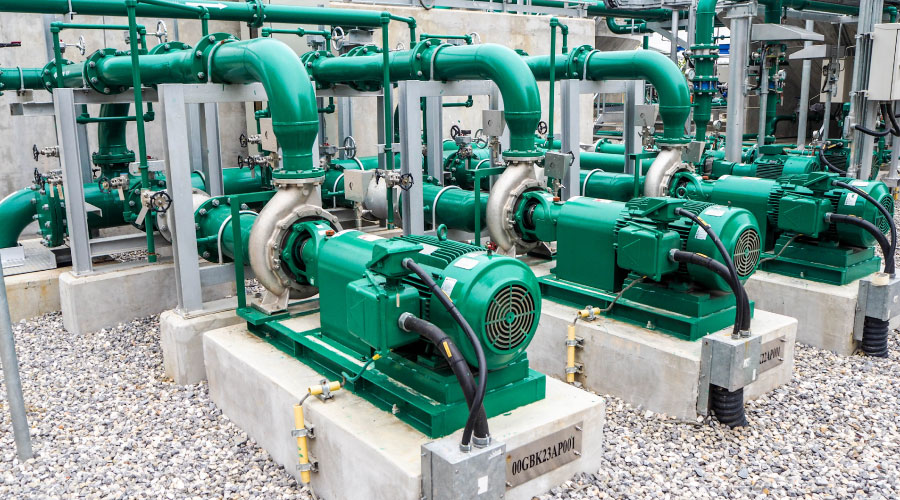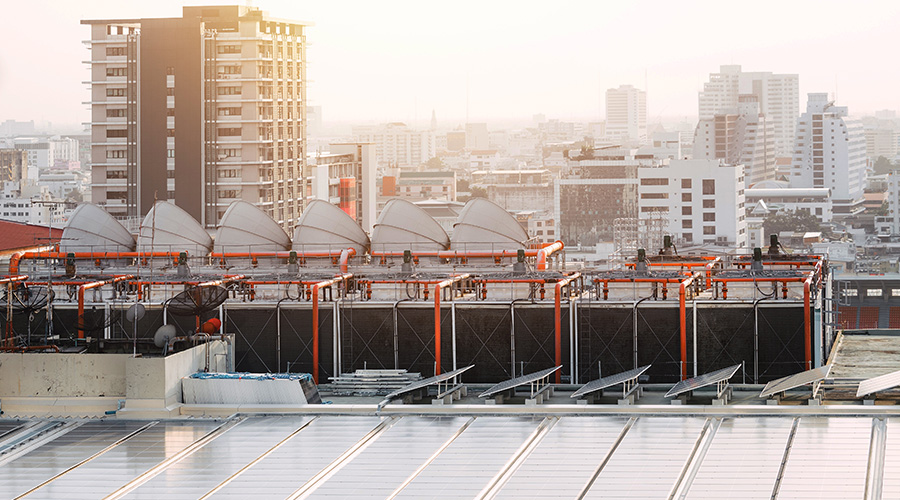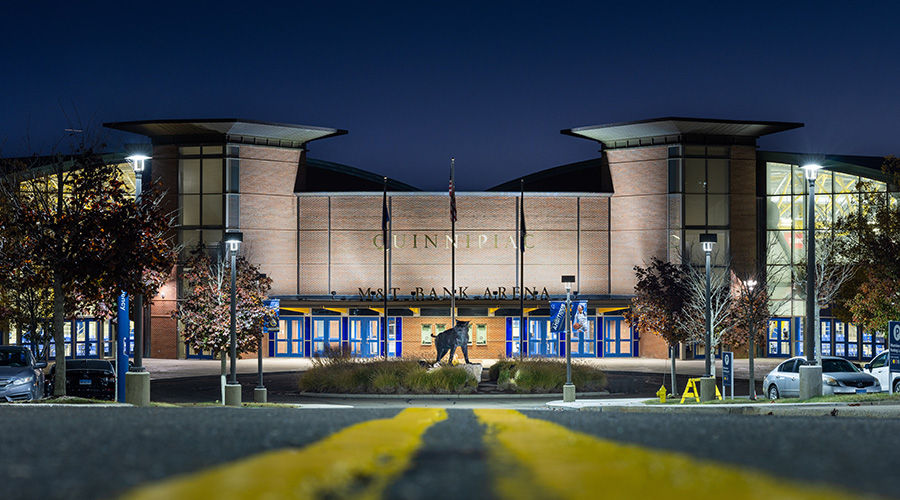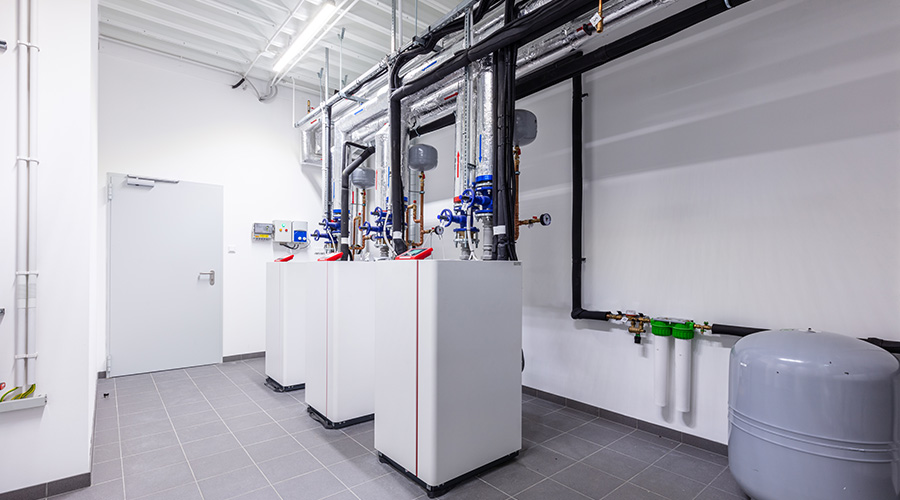Cooling in a Pinch
Suppliers of temporary cooling equipment offer insights on identifying the right equipment and ensuring it performs when facilities need it most
Most HVAC systems do a respectable job of keeping institutional and commercial facilities comfortable. Installed, operated and maintained properly, systems maintain a proper balance of heating, cooling, ventilation and humidity.
But there are exceptions to that rosy scenario. In the best cases, evolving operations in facilities — a renovation or the arrival of new heat-generating equipment, for example — put added stress on a system’s cooling capabilities. Such situations force maintenance and engineering managers to make arrangements for additional cooling capacity.
In the worst cases, power outages or a natural disaster disable an HVAC system, leaving managers to scramble for cooling capacity to keep occupants cool.
To provide cooling in such situations, a growing number of managers are looking at their options for temporary cooling.
Planning is “much more prevalent now,” says Garth Tagge, vice president of Spot Coolers. “The awareness in facilities has changed.” He cites the hurricanes of 2005 as one of the factors in facilities growing interest in investigating temporary cooling options.
Technology Check
Managers often use terms such as emergency, portable and temporary interchangeably in discussing such cooling, which reflects the variety of equipment options and applications in which they are used.
“Our equipment is not just for emergencies anymore,” says Clark Michel of Atlas Sales and Rentals. “It can be primary, supplemental, or emergency cooling.”
Temporary units, often smaller than 12 tons, are immediately portable and fit through a doorway, Tagge says. Larger units, often transported on flatbed trucks and located outside of a facility, are referred to as mobile.
Managers who haven’t researched product options in a number of years will find that the equipment has changed.
John Doran, manager of the heat management department for Denso Sales California Inc., points out technology advances managers should be aware of:
• Connections for output signals to allow remote monitoring of units and input signals to allow the units to coordinate with the building automation system.
• Diagnostic codes on the controller display panel, which help users quickly identify the operating status of their unit or the cause of operating interruptions.
• 24/7 programming capability so users can program the unit to turn on and off and adjust cooling modes at different times of the day or week.
Assessing the Situation
Perhaps the most important piece of information in planning for temporary cooling needs is understanding where a problem with the cooling system might occur.
“Most facilities managers probably already know where the troublesome areas, or ‘hot spots,’ are in their buildings,” Michel says. “The data center is one critical area or an office area with insufficient cooling. Once the area is determined, the heat load and cooling requirements can be calculated.”
“Managers also need to consider whether they want to spot cool critical areas or provide cooling for an entire room, floor or building,” Doran says. This information will help the supplier identify the type and size of cooling units required for the job, as well as how and where to install them.
Too often, managers don’t understand the correlation between HVAC systems and temporary units.
“It’s not a perfect substitute,” Tagge says. “A 5-ton portable unit won’t necessarily provide the same level of performance as a 5-ton rooftop unit designed for the building.”
Next, managers need to understand a facility’s ability to support temporary cooling equipment. Doran advises managers to check the availability of electrical outlets so that either the correct product is selected to match the available electrical circuits or to pre-install the appropriate electrical outlets to match the type of cooling products required.
“It is common sense that the more cooling required the higher the electrical load will be,” he says. “However, if these requirements are not considered in advance, it might be too late once an emergency occurs. Portable air conditioners with 10,000 to 14,000 Btu output only require 110 volts and will run the smallest 15-amp circuit. But larger 60,000 Btu models require either a 50-amp circuit at 208/230 volts or a 460-volt three-phase, 20-amp circuit.”
Wade Sorenson, national accounts manager for Temp-Air advises managers to address other key issues:
• How much floor space can they give up with a temporary unit?
• Does the unit need to sit outside and duct into the space?
• What temperature and relative humidity range is required?
• What happens to the condensate water? If a drain is nearby, a condensate pump may be used. If not, who will be responsible to empty the condensate tank?
• What happens to the condenser heat? If a room’s false ceiling acts as a return plenum, how much duct is needed to reach the ceiling? If there is no return running, where can the condenser heat be put? In a storage room, out a window, or elsewhere?
• How much noise will the unit generate? Most portable units generate 57–71db. So does the unit need to sit outside the room and duct in to avoid noise?
Manufacturers as Partners
Whether a manager decides to rent or buy temporary cooling equipment, manufacturers recommend several strategies for ensuring that conversations between the two parties results in the customer getting the most appropriate unit for the application.
“The best thing to do to plan for a cooling emergency is to meet with a supplier and get an emergency plan established,” Sorenson says. He also makes these recommendations:
• Get phone numbers — cell, office, and home — with backup phone numbers
• Establish emergency pricing ahead of time – this will save money
• Make sure to pass this information onto all involved parties so everyone knows what to do if an emergency happens.
Perhaps the biggest question to discuss with the equipment supplier is equipment availability.
“Establish a time frame that the cooling is needed,” Sorenson says. “Make sure, when meeting with a supplier, that they understand what you consider a emergency response time.” To get this information, managers will have to do some homework.
“Consider what the loss is for every hour or minute a production line is shutdown or a system is off-line,” Doran says. “Some data-center managers tell us they have only 10 minutes to start the backup cooling before their networks crash. In these cases, the units are already setup or are waiting in adjacent storage rooms with ducting and drainage connections pre-installed for quick connections when a crisis arises.”
Too often, managers fail to consider how emergencies can affect product availability.
“Often, the conditions that are causing problems at your facility are affecting hundreds if not thousands of others,” he says. “Whether the cause is a power outage, heat wave, hurricane, flood or other severe weather conditions, it may be tough to find products available for rent or purchase because of the sudden high demand caused by these extreme conditions. Consider keeping some cooling units on hand for the most critical, heat sensitive areas so that you are not relying 100 percent on your suppliers for product during an emergency.”
When the conversation with the supplier is finished, managers should understand exactly what the facility will receive in an emergency.
The supplier “should provide you a recommended size for equipment based on the information they gather from you,” Sorenson says. “They should help determine where the equipment should be placed. They should offer installation options.
“Once installed, they should show the people responsible on site how to operate and any routine maintenance that may need to be performed. They should provide you with a service number, including after hour service if the equipment should fail after hours or on the weekend.”
Sorenson’s most important of advice might be this: “Never be afraid to ask questions.”
Related Topics:











